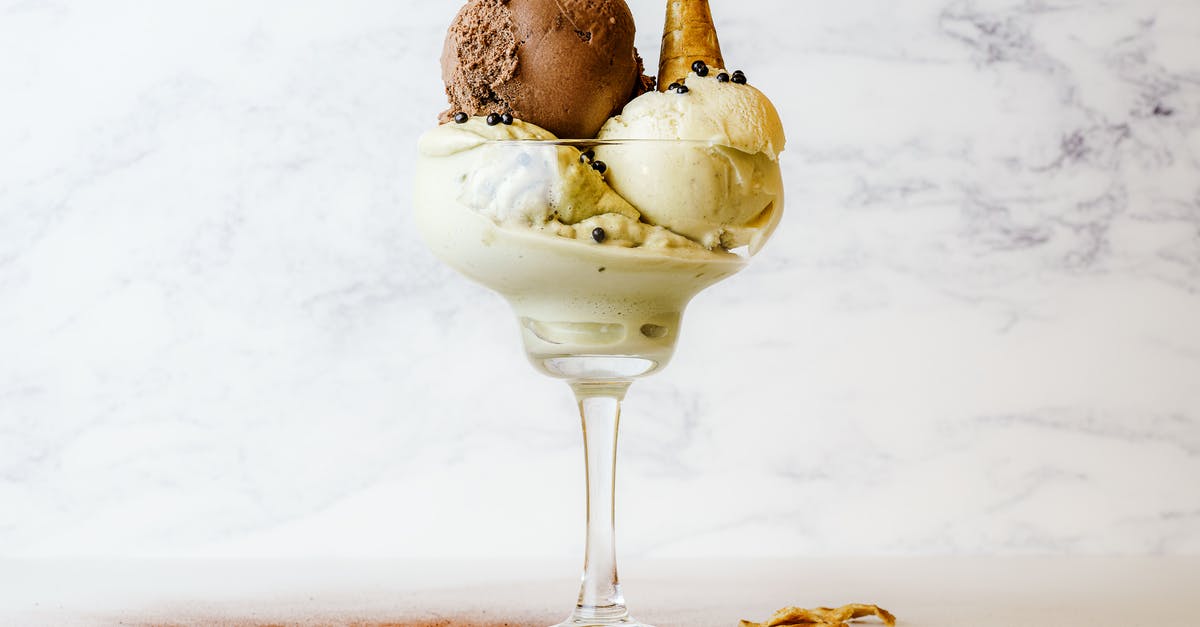emulsifier and stabilizer equivalent to one yolk for frozen desserts

I want to make ice cream, sorbet and gelato without eggs. Momofuku's Christina Tosi's Milk Bar cookbook advocates for this and uses gelatin as emulsifier and stabilizer as well as glucose for thickening instead of the usual full eggs/yolks required by many other books (e.g. one of Ben & Jerry's bases, Ample Hills, Bi-Rite). [UPDATE: the excellent Hello My Name is Ice Cream by Dana Cree avoids using eggs in many of its recipes.]
Modernist Cuisine at Home for their nut butter gelatos also uses tapioca starch and xantham gum as stabilizers (as well as the nut butters themselves, I assume). ChefSteps uses locust bean gum, xantham gum and kappa carrageenan as stabilizers.
What is the equivalent of
- one full egg, and
- one egg yolk
in traditional custard/egg-based ice cream recipes in terms of
- gelatin + glucose
- tapioca starch + xantham gum
- locust bean gum + xantham gum + kappa carrageenan
- other emulsifier/stabilizer/thickener combinations?
Best Answer
There is no such thing as "the equivalent" of one yolk, because yolks and other emulsifiers are not the same thing, don't work the same way, and don't have the same results.
If you are trying to find out how much of a given emulsifier to use, either 1) use a recipe (the preferred way) or 2) find its description (for example in Lersch's book Hydrocolloids, CC lincensed) and see the range. Then work within that range. For xanthan, it is "0.25% thin running sauce, 0.7 - 1.5% thick sauces, 0.5-0.8% foams; [0.07-1%]". "Thin running sauce" is a good description of ice cream base, so you can go with that one as a starting point. You'll have to adjust by experimenting.
Also, no idea why Modernist cuisine advises both xanthan and starch at the same time, as they are both thickeners. They must have found out through experimenting that some ratio gives an optimal mouthfeel, so take advantage of all the work they have put into it and use that ratio. It is independent of any yolk use in other recipes. If it were just because of a "thickening power" (How would you measure such a thing? Any single-dimensioned measure will be inadequate for kitchen purposes), the mixture wouldn't make any sense.
Pictures about "emulsifier and stabilizer equivalent to one yolk for frozen desserts"



What can I use as ice cream stabilizer?
The common thickeners in non-dairy ice creams are guar gum, xanthan gum, acacia gum, carrageenan, and locust bean gum. These ingredients are added to enhance the texture of liquid to mimic the viscosity of a rich creamy ice cream. Guar, acacia, and xanthan gum can all be added to a recipe while cold.What other stabilizer is used in addition to egg as emulsifier?
Lecithin: it sits in egg yolk but can also be derived from soy. In most cases this soy lecithin is what's used in ice cream.What can I substitute for eggs in ice cream?
Coconut milk is commonly used to replace whipped egg yolks. Ice cream, for example, is made by whipping egg yolks. The egg yolks give the ice cream the texture and richness associated with ice cream.Which of the following emulsifier combinations is suitable to stabilize ice cream?
The most commonly used synthetic emulsifiers in ice cream are mono- and diglycerides and polysorbate 80. Due to the improved functional properties when used together, these two emulsifiers are frequently used as a blend of 20% polysorbate 80 and 80% mono- and diglycerides at 0.2% to 0.3% of the total mix weight.Emulsifier vs Stabilizer | Difference between Icecream stabilizer and emulsifier
Sources: Stack Exchange - This article follows the attribution requirements of Stack Exchange and is licensed under CC BY-SA 3.0.
Images: Jill Wellington, Sebastian Coman Photography, Kindel Media, ROMAN ODINTSOV
